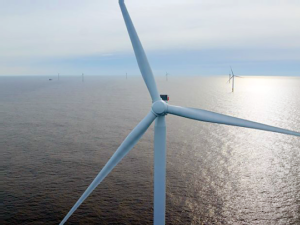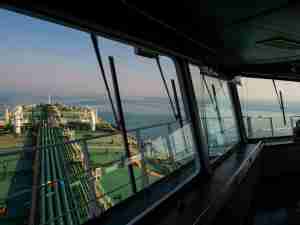U.S. Gas May Be One Trade That Survives Trump’s Mexico Showdown
By: Naureen S. Malik | Jan 27 2017 at 05:01 AM
It could take more than a political standoff between President Donald Trump and Mexico to keep U.S. shale gas from flowing south.
While Mexico works to reverse declining oil and gas production, the nation’s burning record amounts of natural gas pulled from tight-rock formations north of the border. Pipeline deliveries of the fuel from the U.S. have more than doubled in the past two years, and Mexico’s now tied with Chile as the biggest buyer of tanker shipments of U.S. liquefied natural gas leaving Louisiana’s coast.
The gas exports stand in sharp contrast to the showdown threatening one of the world’s biggest bilateral trading relationships. Mexico’s President Enrique Pena Nieto canceled a meeting with Trump Thursday after the U.S. leader blasted him on Twitter for refusing to pay for a wall along the countries’ border—and now Trump’s considering a 20 percent tax on Mexico imports to pay for it. Gas exports, seen as supporting jobs in the U.S. while handing Mexico cheap fuel, could end up being one trade that bucks the political maelstrom, according to ING Groep NV and Pira Energy Group.
“This all boils down to exactly how protectionist Trump decides to be,” Rob Carnell, chief international economist at ING in London, said by e-mail this week. “My guess is this will be targeted, not blanket, and any retaliation is then down to Mexico, and I imagine they would rather have the gas at a decent price than deter it by putting up tariffs.”
Gas piped to Mexico climbed to a record last year, averaging more than 4 billion cubic feet per day in August through October, U.S. government data show. That supply, equal to roughly a fifth of Texas’s total gas output, displaced LNG cargoes from Peru, according to Madeline Jowdy, senior director of global gas and LNG at Pira in New York. Exports climbed even higher after Petroleos Mexicanos’s Los Ramones Phase II pipeline began operations in May.
Trump himself owned as much as $1 million worth of shares in a U.S. pipeline giant, Energy Transfer Partners LP, that’s helping build a line that’ll move more gas to Mexico, according to his federal candidate disclosures in 2015. He still had as much as $50,000 worth of shares in the Dallas-based company as recently as May, according to his most recent disclosure.
LNG imports to Mexico’s Manzanillo terminal from the U.S. have also jumped. Ten tankers have unloaded super-chilled gas at the facility on Mexico’s western coast since the beginning of August, according to ship tracking data compiled by Bloomberg. U.S. gas delivered to Manzanillo has gone for as much as $5.53 per million British thermal units, including transportation costs, based on data in an Energy Department report.
Mexico’s increasing reliance on U.S. natural gas isn’t without risk, according to Bank of America. Protectionist moves by the Trump administration could curtail exports of the fuel, Francisco Blanch, head of commodity markets research for the bank in New York, said by e-mail Wednesday.
The impact may hinge on Mexico’s response to Trump considering a 20 percent tax on imports from the country—to pay for the wall along the southern U.S. border that Trump pledged to build during his presidential campaign. White House Press Secretary Sean Spicer said Thursday, “By doing that, we can do $10 billion a year and easily pay for the wall just through that mechanism alone.”
The gas shipments have helped U.S. energy drillers eliminate a supply glut that had sent prices of the fuel plunging to the lowest level in almost two decades. But in one twist of irony, the exports have also cut costs for Mexico’s manufacturers, helping them compete against American plants.
Policy changes such as renegotiating the North American Free Trade Agreement and constructing a border wall “risk hurting export demand for U.S. natural gas,” Blanch said. “We remain concerned about large-scale disruptions” to trade.
ING head of commodities strategy Hamza Khan said by e-mail Wednesday that gas could keep moving to Mexico through underground pipelines even if Trump succeeds in building a wall along the almost 2,000-mile (3,200-kilometer) border.
“From the political side anything’s possible,” he said, “but as a commodity analyst, I don’t see why either party would want or benefit from reduced flows.”








